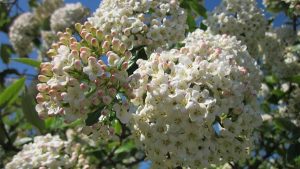Forsythias often get a bad rap, and I’ve never been sure why! With their brilliant yellow blooms, forsythias are – next to crocuses – among the first colors of the season, and a welcome sight after a long, cold winter like we’ve had. So why do so many people dislike this brightly colored bush? Is it simply because it’s so popular?
Let’s break down the pros and cons of forsythias and understand why they’ve become so controversial among gardeners everywhere.
Pros:
Bright yellow blooms are a welcome site in early spring. Like crocuses and cherry blossoms, forsythias are among spring’s first flowers. Their cheery color is not only a happy sign of warmer weather to come, it also makes a great backdrop for other spring plantings, like tulips and pansies. And if you’re bored by yellow flowers, know that there’s more than just one shade of forsythia! The palette ranges from buttery to orangey.
They’re easy to care for. Forsythias love the sun, and beyond getting a few hours of direct exposure each day (six is optimal), they’re not fussy about where they’re planted. They do prefer well-drained soil but will grow in just about anything if you water them well.
There’s a lot you can do with a forsythia bush. While they’re easy enough to prune, you don’t have to prune them. Weeping varieties make a lovely addition to any garden, even after the flowers have died off. Many varieties of forsythias can be pruned into hedges (and you know how we love hedges!) and can serve any of the many purposes hedges serve.
Cons:
They’re common and everyone has them. While this is true, there’s a reason: they’re easy to grow and look so pretty in the spring! Plus, they mix well with other flowers and shrubs to create a pretty, all-season garden.
The flowers don’t last. Also true, but while deciduous, forsythias offer a simple green foliage to your garden, creating a nice backdrop for other plants. Plus, sometimes they’ll surprise you with pretty purple foliage in the fall!
They don’t serve a purpose. They don’t produce fruit for birds or offer any other benefit to indigenous wildlife. I would argue that anything you plant in your garden that isn’t invasive offers benefit. And, actually, forsythias are used medicinally. A member of the olive family, the tiny fruit of the forsythia has been used in herbal medicine to treat everything from upper respiratory infections to flu!
They take over if you don’t care for them. It’s true – forsythias can spread like crazy if you don’t stay on top of them, but they’re easy enough to tame with easy pruning. Plus, some gardeners are looking for something that spreads rapidly, perhaps to conceal an unsightly fence at the back edge of their property. Fast-growing, spreading bushes aren’t always a bad thing!
Overall, we’re pro-forsythia around here. We love their bright color, the ease with which they grow, and their versatility. But most of all, we love the first sight of them – a sure sign that the long winter is finally coming to an end.





